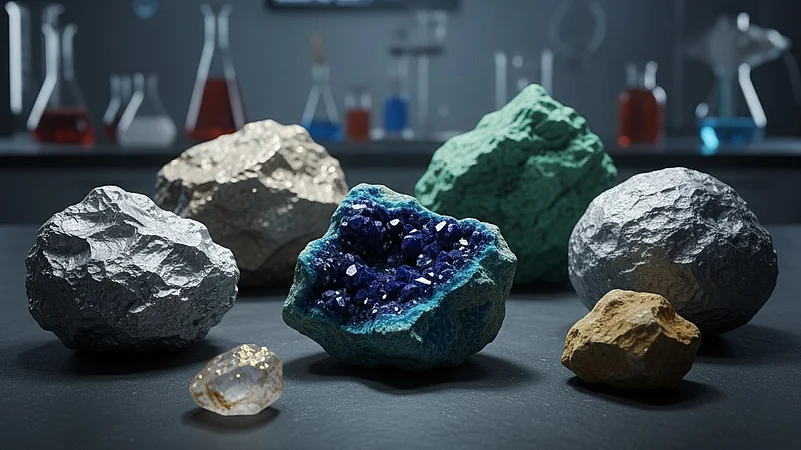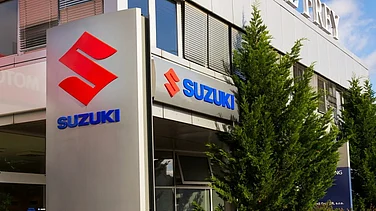
India plans to create a two-month National Critical Mineral Stockpile to secure rare-earth elements amid global supply chain disruptions caused by China’s tightened export controls.
The NCMS is part of the broader National Critical Minerals Mission with ₹500 crore allocated to ensure uninterrupted mineral availability.
The government is rolling out a ₹7,300 crore production-linked incentive scheme to boost domestic manufacturing of rare-earth permanent magnets, essential for green technologies like EVs and wind turbines.
China’s export restrictions have escalated global trade tensions, impacting semiconductor and AI industries, prompting India’s push for strategic autonomy and self-reliance initiatives.
India is preparing to establish the National Critical Mineral Stockpile (NCMS) amid growing concerns over rare-earth supply chain disruptions, following China's tightening of export rules. The initiative aims to ensure the uninterrupted availability of critical minerals vital for India's green technology, defense, and electronics sectors.
Two-Month Rare-Earth Reserve Planned Under NCMS
The government is planning to create a two-month stockpile of rare earth elements under the NCMS, according to The Economic Times. Private sector companies are expected to participate in the project, and the scope may later expand to include other strategic minerals. The initiative falls under the National Critical Minerals Mission (NCMM), which has been allocated ₹500 crore.
Sector experts expect impact from China’s export curbs on rare earths to persist despite early signs of relaxation. They are also of the view that while stockpiling will be critical to the NCMM’s success, lack of the cutting-edge technology needed in the production and processing of rare-earth minerals in India remains a key challenge.
PLI Scheme to Boost Rare-Earth Magnet Production
Rare-earth elements are a group of 17 minerals which share similar chemical properties and are a key input for magnets and other components used in the manufacture of electric vehicles, wind turbines, and other green technologies. The said programme is expected to complement the government’s efforts to boost the domestic production of rare-earth magnets. Further, the government is gearing up a production-linked incentive scheme worth ₹7,300 crore to accelerate the production and manufacturing of rare-earth permanent magnets in the country, with a target of 6,000 over the next five years.
China's Rare-Earth Export Curbs Disrupt Global Trade
China last week announced stricter controls on the export of rare-earths and related technologies, escalating trade tensions with the US. The move is seen as retaliation against US tariffs and could significantly impact global supply chains, including semiconductors and AI hardware.
A report by Bloomberg highlights that companies like ASML Holding NV, Intel, TSMC, and Samsung may face delays due to reliance on rare-earth-dependent technology.
This further prompted US President Donald Trump to announce on Friday that Washington would impose an additional 100% tariff on Beijing and export controls on “any and all critical software”, starting November 1, Bloomberg reported.
“The rare-earth curbs may lead to weekslong delays in shipments for ASML Holding NV, the only manufacturer in the world of machines that make the most advanced semiconductors,” an official with knowledge of the matter told Bloomberg. Major players in the chip making industry, including Intel Corp., Taiwan Semiconductor Manufacturing Co. and Samsung Electronics Co., rely on ASML to produce semiconductors.
Towards Strategic Autonomy and Atmanirbharta
India is estimated to hold 7.23 million tonnes of rare-earth oxide locked in 13.15 million tonnes of monazite found in the coastal and inland regions of Andhra Pradesh, Odisha, Tamil Nadu, Kerala, West Bengal, Jharkhand, Gujarat, and Maharashtra. The ministry of mines has conducted auctions in five tranches, putting 55 critical and strategic mineral blocks under the hammer. The government launched the sixth tranche of auctions for additional blocks. The auctions are held as part of a national push to increase the availability of strategic minerals, reduce dependency on imports, and support domestic industries including that of electronics, clean energy, and defense.
According to Chemical Industry Digest, the launch of the National Critical Mineral Stockpile marks a crucial step toward technological sovereignty and self sufficiency. The establishment is likely to become one of the cornerstones of India’s long term vision of Atmanirbharta and low-carbon growth strategy.




























